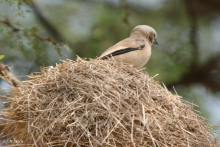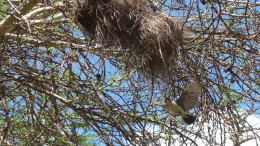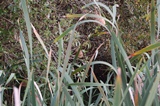Weaver news
| Echeverry-Galvis MA, Peterson JK, Sulo-Caceres R. 2014. The social nestwork: tree structure determines nest placement in Kenyan weaverbird colonies. PLoS ONE 9(2): e88761. 


Abstract. Group living is a life history strategy employed by many organisms. This strategy is often difficult to study because the exact boundaries of a group can be unclear. Weaverbirds present an ideal model for the study of group living, because their colonies occupy a space with discrete boundaries: a single tree. We examined one aspect of group living. nest placement, in three Kenyan weaverbird species: the Black-capped Weaver (Pseudonigrita cabanisi), Grey-capped Weaver (P. arnaudi) and White-browed Sparrow Weaver (Ploceropasser mahali). We asked which environmental, biological, and/or abiotic factors influenced their nest arrangement and location in a given tree. We used machine learning to analyze measurements taken from 16 trees and 516 nests outside the breeding season at the Mpala Research Station in Laikipia Kenya, along with climate data for the area. We found that tree architecture, number of nests per tree, and nest-specific characteristics were the main variables driving nest placement. Our results suggest that different Kenyan weaverbird species have similar priorities driving the selection of where a nest is placed within a given tree. Our work illustrates the advantage of using machine learning techniques to investigate biological questions. Literature as featured in Weaver Watch news items |










